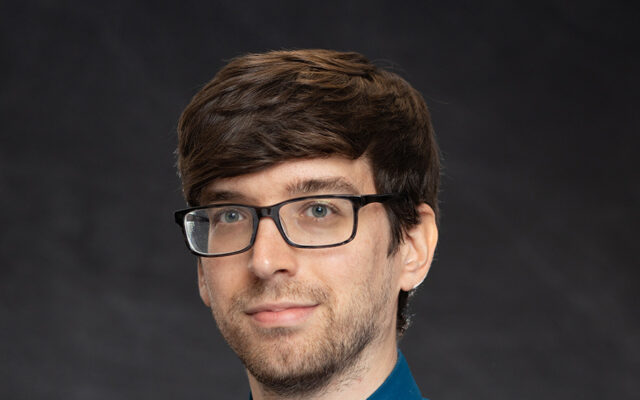
“The behavior of the natural world is intelligible to the human mind. There are patterns and symmetries which can be expressed in clean, mathematical form. To one who has learned these laws of physics, the colors of the rainbow, the streaks of summer lightning, and the motion of the sail in wind are all inevitable manifestations of the same finite collection of fundamental principles.”— Nathan Herring
Faculty Information
Additional Faculty Information for Nathan Herring
Education
B.A. in Physics and Philosophy, Central College, 2013
Ph.D. in Physics and Astronomy, University of Pittsburgh, 2020
Awards:
Berry College Outstanding Faculty Member of the Year 2021
Myron P. Garfunkel Excellence in Graduate Teaching Award 2020
Andrew Mellon Predoctoral Fellowship 2019 ‒ 2020
Elizabeth Baranger Teaching Award Finalist 2019
Presentations:
“Cosmological Production of Darkest Matter.” presented at Particle Astrophysics Symposium at University of Notre Dame, 2020.
“Particle Decay in Post Inflationary Cosmology.” presented at the Dark Universe Workshop at the Institute for Theoretical Physics, Sao Paulo, BR, 2019.
Biography
For as long as I can remember I have been fascinated by the transformations of the world around me. This curiosity has been my constant guide through life, impelling me to study both broadly and deeply. After completing a degree in physics and philosophy at a small liberal arts college, I pursued graduate studies in theoretical physics. My research focuses on questions which lie at the intersections of the biggest and smallest physical systems: the Universe and the elementary constituents of matter, a field known as particle cosmology. What are dark energy and dark matter? How did the first protons form? What was the initial, physical state of the Universe? What is the fundamental description of matter?
In introducing physics to students, I often tell them that I have both bad and good news. The bad news is that our common sense intuitions are woefully unreliable in understanding the phenomena of the physical world. Even the venerable mechanics of Newton requires one to confront powerful misconceptions, let alone the staggering ideas of contemporary physics. However, there is also good news: the behavior of the natural world is intelligible to the human mind. There are patterns and symmetries which can be expressed in clean, mathematical form. To one who has learned these laws of physics, the colors of the rainbow, the streaks of summer lightning, and the motion of the sail in wind are all inevitable manifestations of the same finite collection of fundamental principles.
Yet physics is more than an assemblage of formulas. Physics is a method of examining nature. It is a method which leverages careful observation, judicious application of simplifying assumptions, and a pursuit for unifying, precise explanations. I strive to inspire this character of thinking in my students by promoting active reflection on how they are modeling a physical situation and helping them to develop a broad, interconnected view of the various domains of nature.
However, a scientific education is not sufficient in addressing the questions and challenges unique to humanity. It is a component of a complete education, a voice in the perennial dialogue between the complementary modes of rational truth seeking. At Hillsdale College, our students encounter all of these modes. They learn how to examine them in relation to each other. They learn how to see the whole out of the parts. In doing so they acquire not merely a collection of facts, but a well-formed habit of mind. This is the great treasure of liberal arts education, and I am delighted to be a part of it.